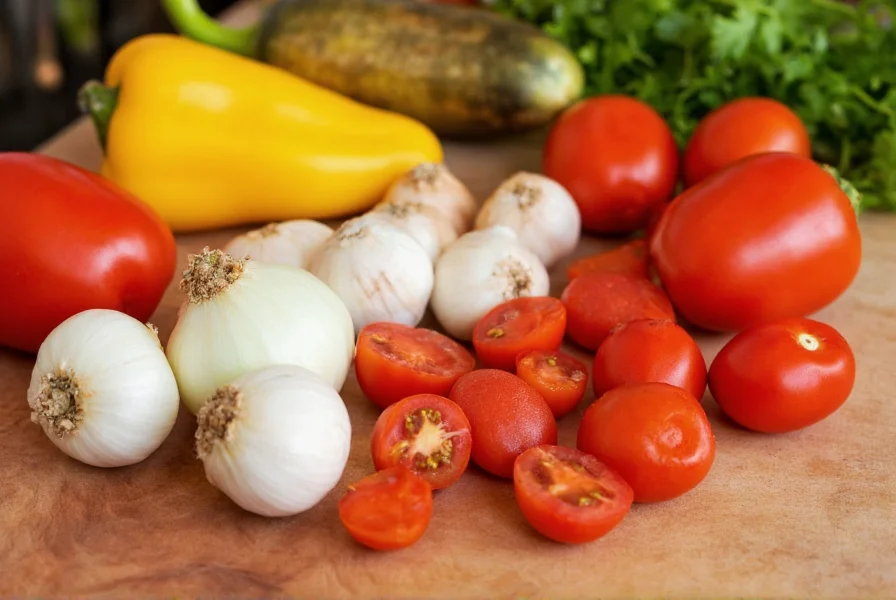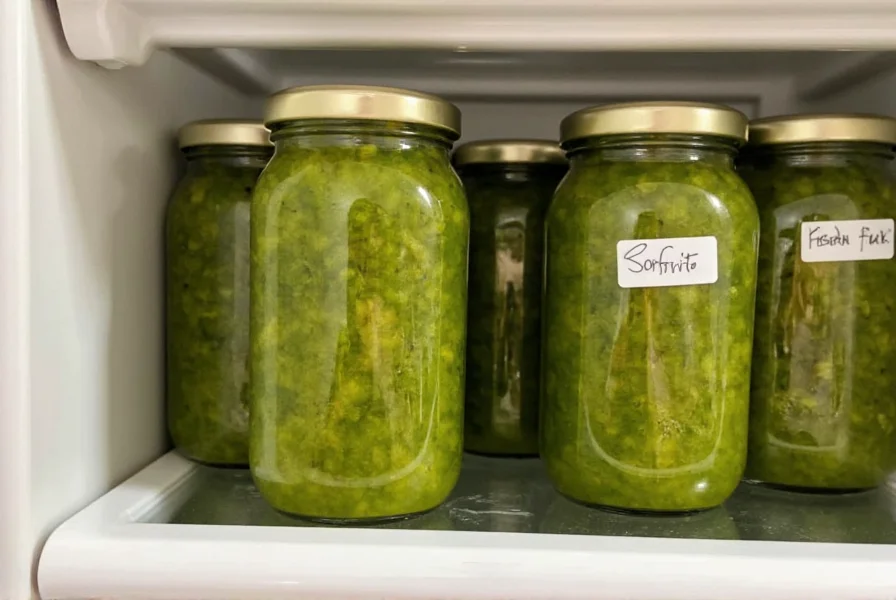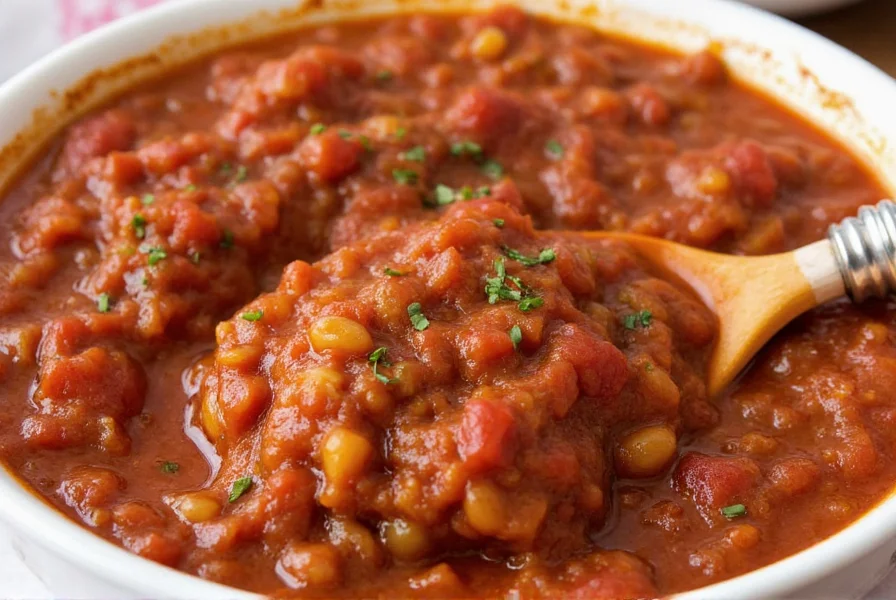Sofrito forms the aromatic backbone of countless dishes across multiple culinary traditions. Unlike its French counterpart mirepoix, sofrito incorporates additional ingredients that create distinctive flavor profiles depending on regional variations. Understanding this versatile cooking base unlocks authentic preparation methods for traditional recipes worldwide.
Historical Origins and Cultural Significance
The term “sofrito” derives from the Spanish verb “sofreír,” meaning “to lightly fry.” This cooking technique traveled across continents through Spanish colonization, adapting to local ingredients and preferences. In Puerto Rico, sofrito criollo became a cultural staple, while Cuban cuisine developed its own distinct version. Italian cuisine features soffritto, typically without tomatoes, serving as the foundation for many pasta sauces and soups.
Regional Variations Compared
| Region | Core Ingredients | Distinguishing Features | Common Uses |
|---|---|---|---|
| Spanish | Onion, garlic, tomato, bell pepper | Tomato-based, often includes paprika | Paella, stews, braises |
| Italian | Onion, celery, carrot | Known as soffritto, rarely includes tomato | Pasta sauces, soups, risotto |
| Puerto Rican | Onion, garlic, culantro, ají dulce | Features recaito and tomato-based versions | Arroz con pollo, stews, bean dishes |
| Cuban | Onion, garlic, green pepper, tomato | Often includes cumin and oregano | Black beans, ropa vieja, rice dishes |
Traditional Sofrito Preparation Techniques
Creating authentic sofrito requires attention to ingredient ratios and cooking methods. The traditional technique involves slowly sautéing aromatics in olive oil over medium-low heat until they release their flavors without browning. This gentle cooking process extracts maximum flavor while maintaining ingredient integrity.
For Spanish sofrito, chefs typically begin with onions and garlic, adding tomatoes later to prevent acidity from overwhelming the base. Puerto Rican sofrito often incorporates fresh culantro and ají dulce peppers, which provide distinctive flavor notes difficult to replicate with substitutes. Italian soffritto benefits from finely diced vegetables that melt into sauces during long cooking times.

Step-by-Step Homemade Sofrito Recipe
Creating sofrito from scratch yields superior flavor compared to store-bought alternatives. Follow these steps for authentic results:
- Finely dice 1 large onion, 1 bell pepper, and 3-4 garlic cloves
- Heat 1/4 cup olive oil in a heavy skillet over medium-low heat
- Add onions and bell peppers, cooking slowly for 8-10 minutes until softened
- Add garlic and cook for 2-3 minutes until fragrant but not browned
- For tomato-based versions, add 2 diced tomatoes and cook until liquid reduces
- Season with salt to taste and optional herbs like cilantro or culantro
- Cook until mixture forms a thick, aromatic paste (15-20 minutes total)
Proper Storage Methods for Longevity
Homemade sofrito maintains freshness when stored properly. Transfer cooled sofrito to an airtight container and refrigerate for up to one week. For longer preservation, freeze sofrito in ice cube trays, then transfer frozen cubes to freezer bags for up to six months. This convenient portioning method allows cooks to use only what they need for each recipe.
When freezing sofrito, leave minimal headspace in containers as the mixture expands during freezing. Thaw frozen sofrito overnight in the refrigerator before use for best results. Never refreeze previously frozen sofrito, as this compromises both flavor and texture.

Culinary Applications and Expert Tips
Sofrito serves as the flavor foundation for countless dishes across multiple cuisines. In Spanish cooking, it forms the base for paella and various stews. Puerto Rican chefs use sofrito criollo as the starting point for rice dishes, beans, and meat preparations. Italian soffritto enhances tomato sauces, soups, and braised meats.
Professional chefs recommend these sofrito cooking techniques:
- Always cook aromatics slowly to develop flavor without burning
- Adjust ingredient ratios based on dish requirements
- Add sofrito early in cooking to allow flavors to meld
- Use homemade sofrito instead of store-bought for superior results
- Experiment with regional variations to expand culinary repertoire
Common Substitutions and Adaptations
When authentic ingredients prove difficult to find, consider these substitutions while maintaining sofrito’s essential character. Replace culantro with extra cilantro (though the flavor profile differs). If ají dulce peppers aren’t available, use very small amounts of sweet bell pepper. For Italian soffritto, maintain the classic 2:1:1 ratio of onion to carrot to celery.
Modern adaptations include roasted sofrito for deeper flavor, or quick versions using food processors for faster preparation while maintaining quality. Some contemporary chefs incorporate additional ingredients like roasted red peppers or smoked paprika for unique variations while respecting traditional foundations.
Frequently Asked Questions
What is the difference between sofrito and mirepoix?
Sofrito and mirepoix both serve as flavor bases, but differ significantly. Mirepoix (French) uses onion, carrot, and celery in a 2:1:1 ratio without tomatoes. Sofrito (Spanish/Latin) typically includes onions, garlic, bell peppers, and tomatoes, creating a more complex, aromatic foundation with regional variations across Mediterranean and Caribbean cuisines.
Can I freeze homemade sofrito?
Yes, freezing is an excellent method for preserving homemade sofrito. Cool the sofrito completely, then portion into ice cube trays. Once frozen, transfer cubes to labeled freezer bags. Properly frozen sofrito maintains quality for 4-6 months. Thaw overnight in the refrigerator before use for best results in cooking.
What’s the purpose of sofrito in cooking?
Sofrito serves as the flavor foundation for countless dishes, providing depth and complexity through slowly cooked aromatics. It creates a flavor base that enhances all subsequent ingredients, distributes fat-soluble flavors throughout dishes, and develops the Maillard reaction compounds that contribute to rich, complex tastes in stews, rice dishes, and sauces across multiple culinary traditions.
How long does fresh sofrito last in the refrigerator?
Freshly made sofrito typically lasts 5-7 days when stored in an airtight container in the refrigerator. The high moisture content from fresh vegetables makes proper storage essential. Always use clean utensils when handling to prevent contamination, and check for any signs of spoilage like off odors or mold before using.











 浙公网安备
33010002000092号
浙公网安备
33010002000092号 浙B2-20120091-4
浙B2-20120091-4